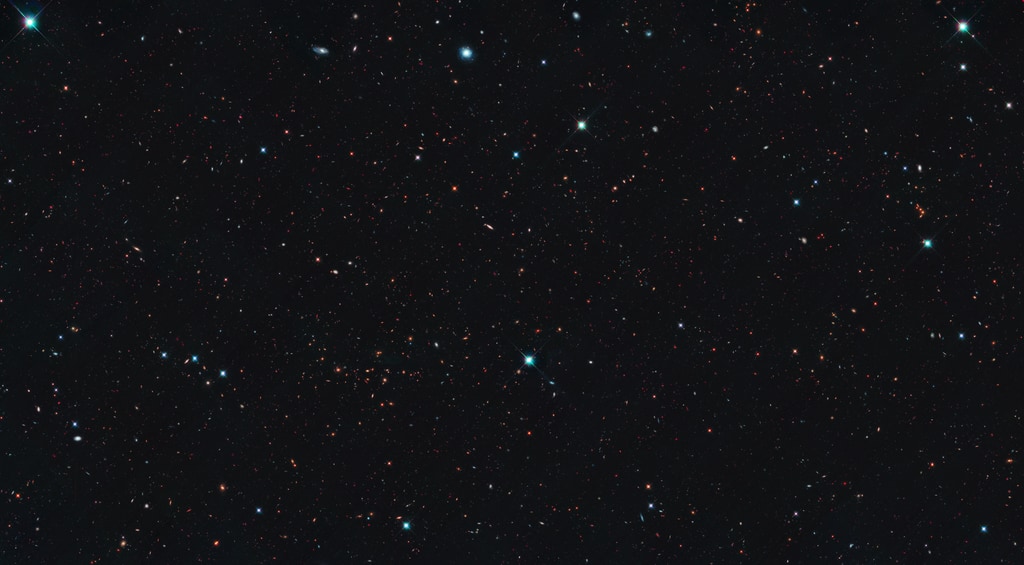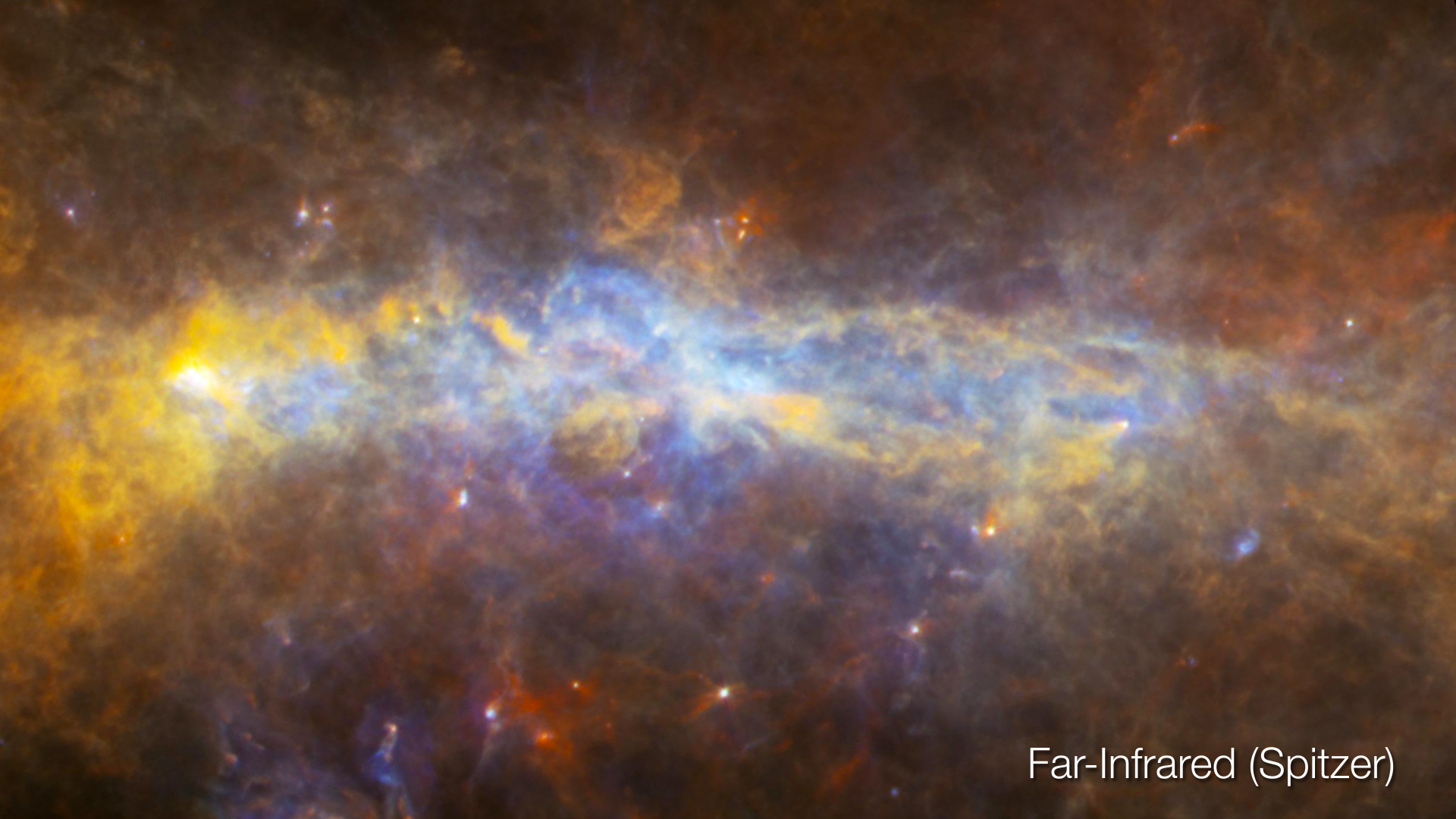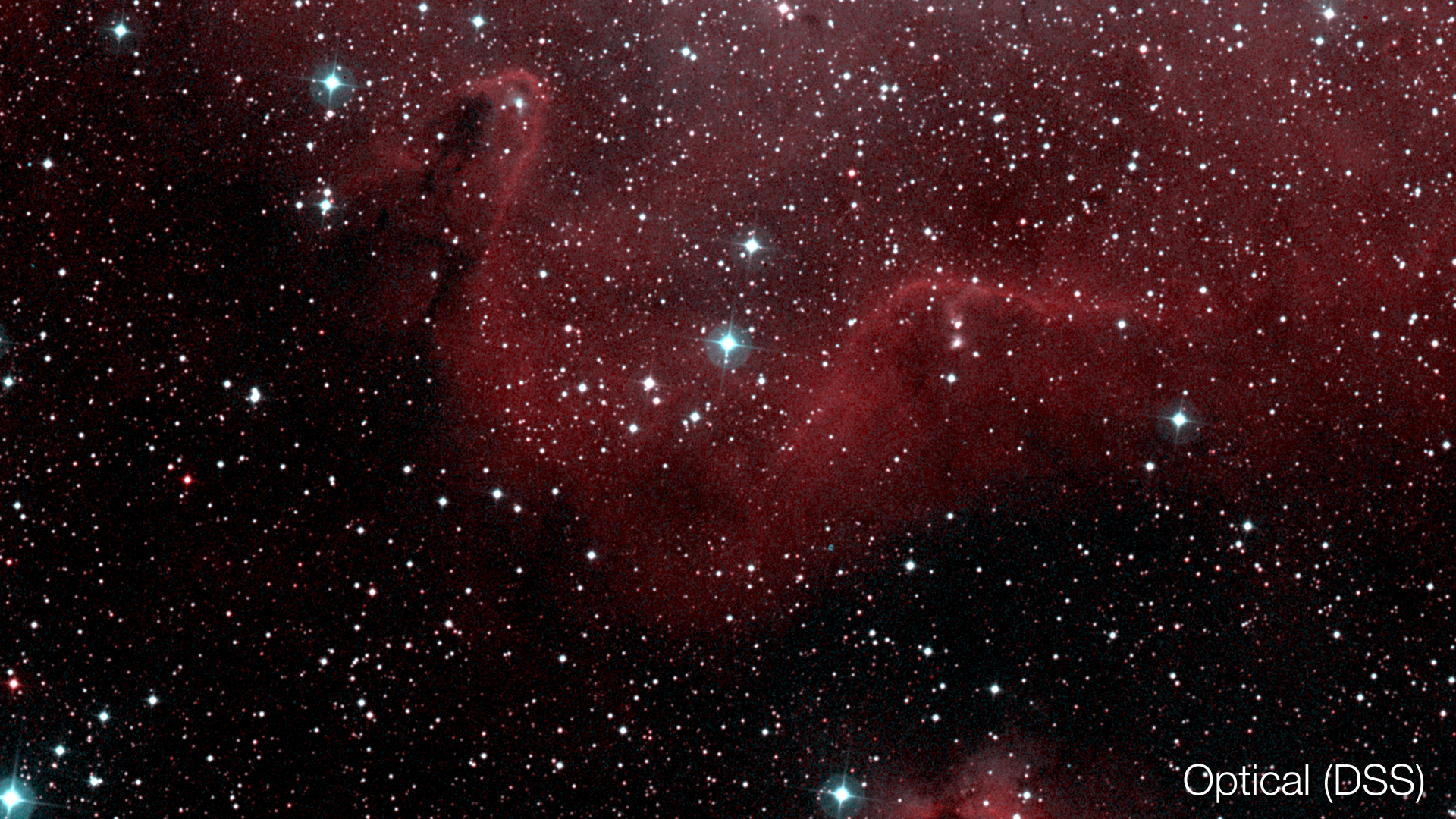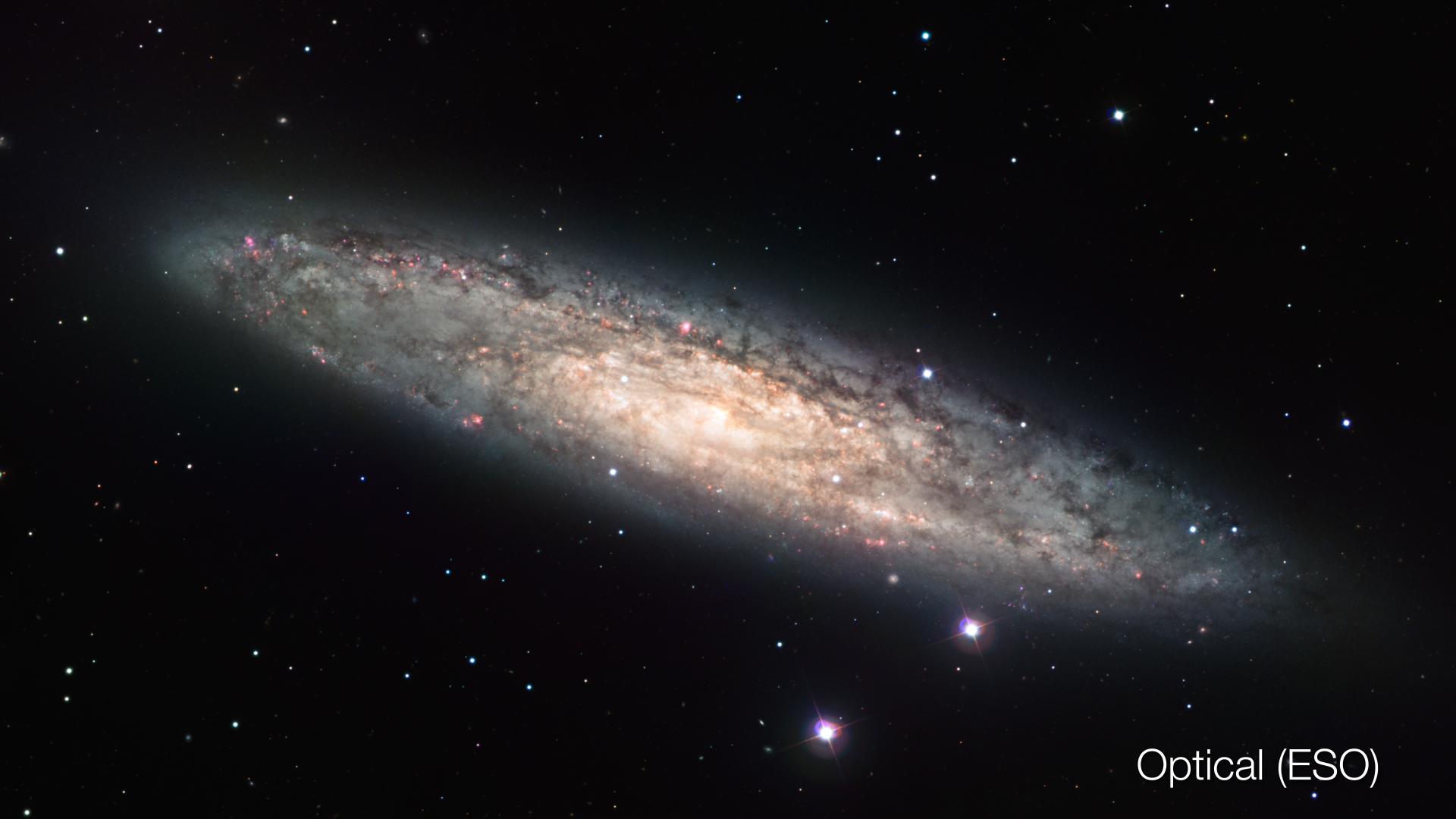Stephan's Quintet
This visualization uses Hubble data to simulate a flight past the galaxies known as Stephan’s Quintet, providing an illuminating perspective on their position and gravitational relationships to one another.
Stephan’s Quintet is the name given to five galaxies that appear to be grouped together from our perspective on Earth. However, closer examination reveals that the well-formed spiral in the foreground is actually much closer to us and is not interacting with the other galaxies, while the galaxies appearing behind it have had their shapes distorted by each other’s gravitational fields.
The larger and more massive a galaxy, the greater the pull it will have on another galaxy. The effects are clearly visible in the warped galaxies of Stephan’s Quintet. Some of the strange forms created by interacting galaxies are short-lived, while some areas of a galaxy may be permanently separated, or small galaxies combined together. The collision of gas and other material in galaxies as a result of these interactions triggers bursts of bright star formation.

4K still image of Stephan's Quintet
Credits
Please give credit for this item to:
NASA, ESA, and G. Bacon, J. DePasquale, F. Summers, and Z. Levay (STScI)
-
Visualizers
- Greg Bacon (STScI)
- Joseph DePasquale (STScI)
- Frank Summers (STScI)
- Zoltan Levay (STScI)
-
Technical support
- Leann Johnson (Global Science and Technology, Inc.)
Release date
This page was originally published on Tuesday, January 15, 2019.
This page was last updated on Sunday, March 9, 2025 at 11:50 PM EDT.
Missions
This page is related to the following missions:Datasets used
-
[Hubble Space Telescope]
ID: 831
Note: While we identify the data sets used on this page, we do not store any further details, nor the data sets themselves on our site.





























